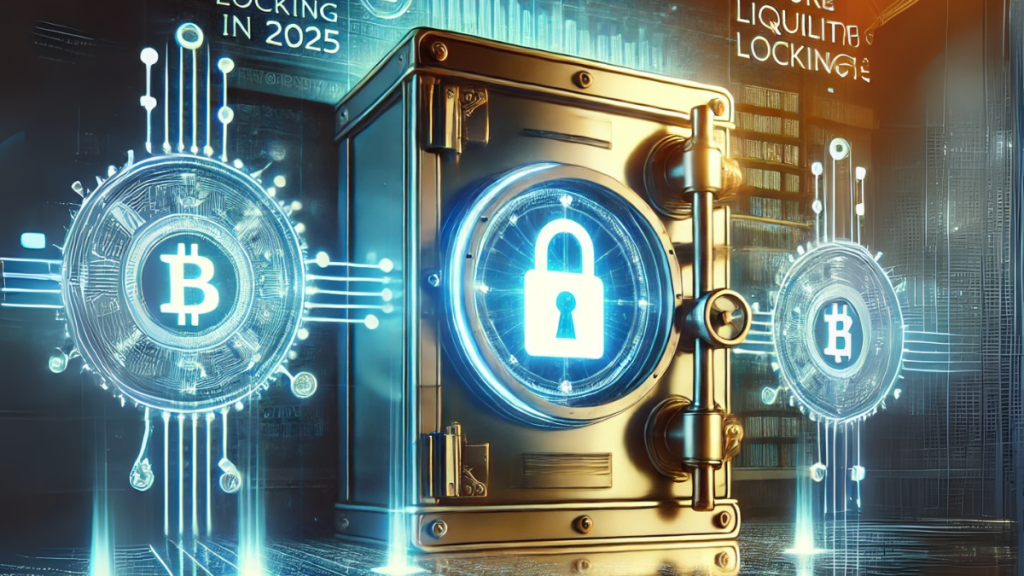Introduction
In the fast-paced crypto world of 2025, launching a new token comes with a crucial step: securing your project’s liquidity. Liquidity lockers have become standard practice for new cryptocurrency projects looking to build investor trust and prevent rugpulls. A rugpull is a scam where developers withdraw all liquidity, crashing the token’s value and leaving investors with nothing. To avoid this, savvy developers now use secure liquidity locker services to time-lock their liquidity pool (LP) tokens. But with many locker options available, you might wonder: which is the best liquidity locker of 2025? This comparative, data-driven analysis will explore the top platforms and help you decide. We compare features, fees, and security of leading lockers while highlighting why Mudra Manager stands out as the top choice.
Why Locking Liquidity Is Essential in 2025
Cryptocurrency markets have matured, but investor skepticism remains high due to past scams. Locking liquidity has become standard operating procedure for legitimate projects. Here’s why:
- Prevents Rugpulls: By locking LP tokens in a time-locked smart contract, developers forfeit the ability to remove liquidity on a whim. This reassures investors that the team can’t dump the pool and run.
- Boosts Investor Confidence: A project with locked liquidity signals commitment. Investors see that the team has “skin in the game” and won’t abandon the project easily.
- Market Stability & Credibility: Locked liquidity reduces price volatility and meets investor/exchange expectations. By 2025, many launchpads and exchanges require a large portion of liquidity to be locked as a sign of legitimacy.
What to Look for in a Liquidity Locker
Not all liquidity lockers are created equal. When choosing the best liquidity locker 2025, consider these factors:
- Supported Blockchains: Ensure the locker supports the blockchain your token is on (Ethereum, BSC, Polygon, etc.).
- Fees and Costs: Look for transparent, low fees. Some platforms charge a percentage of LP tokens (0.5–1%), while others have flat fees or require buying their token. Lower fees leave more liquidity for your project.
- Security and Reputation: Choose a service with a solid track record (audited contracts, no breaches, trusted by many projects).
- User Experience: A user-friendly interface and clear instructions are important, especially if you’re locking liquidity for the first time.
Now, let’s compare the top liquidity locker platforms of 2025.
Top Liquidity Locker Platforms in 2025
Mudra Manager – The Leader in Secure Liquidity Locking
Mudra Manager has quickly become the best liquidity locker in 2025, especially for tokens on Binance Smart Chain (BSC). Key highlights:
- Focus: Specializes in BSC projects, with thousands of tokens secured.
- Lowest Fees: Offers some of the lowest fees in the industry (e.g., a small flat BNB fee or ~0.5% of LP tokens). Unlike some competitors, Mudra does not require buying or burning a separate token to use the service.
- User-Friendly: Intuitive dashboard that makes locking liquidity simple even for first-timers. The interface helps avoid mistakes (e.g., clearly distinguishing a normal token address vs an LP token address).
- Advanced Features: Free lock extensions, the ability to add more LP tokens to an existing lock, and a verified lock certificate with a QR code to share proof with your community.
- Reputation: Audited and highly trusted, Mudra Manager is widely recommended in the crypto community. By 2025, its rapid growth and positive user feedback position it as the top choice for secure liquidity locking.
Unilocker – Multi-Chain Veteran
Unilocker is one of the pioneers in liquidity locking, active since 2020:
- Multi-Chain Support: Works across Ethereum, BSC, Polygon, and more. Ideal if you need a cross-chain locking solution.
- Features: Supports incremental locks (splitting liquidity into multiple locks) and ownership transfers of locks.
- Usage & Fees: Trusted by thousands of projects, holding a large total value locked (TVL).
Other Notable Liquidity Lockers
Aside from the big ones above, a few other platforms are worth mentioning:
- Team.Finance (TrustSwap): A multi-chain platform (Ethereum, BSC, Avalanche, etc.) that also offers token vesting services. It might have a slight learning curve due to its comprehensive features,
- PinkLock (PinkSale): Integrated with the PinkSale launchpad on BSC, it automatically locks liquidity after presales. Great for BSC token launches using PinkSale, though less common outside that context.
- DxLock (DxSale): A widely-used decentralized locker (via dx.app) supporting multiple chains. It offers both token and LP locks and has been around since the early DeFi days but has become slightly outdated.
- DeepLock: A BSC-focused locker that includes a rug-proof launchpad and vesting. It’s smaller in scale.
Why Mudra Manager Comes Out on Top
After comparing all these options, Mudra Manager clearly shines as a top liquidity locker in 2025:
- Best Value: Its low fees and lack of a required utility token mean almost all your liquidity goes into the pool, not into fees.
- BSC Expertise: Mudra’s specialization in Binance Smart Chain means it has optimized security and usability for BSC’s needs, where many new tokens are launching.
- User Trust: Countless developers and crypto communities endorse Mudra for its reliability. The availability of lock certificates and public verification builds investor trust instantly.
- Continuous Improvement: Mudra Manager continues to update with new features and improvements, keeping it ahead of the curve without compromising simplicity or security.
Conclusion
When choosing a liquidity locker in 2025, you should weigh your project’s needs against what each platform offers. For most token developers, Mudra Manager emerges as the best liquidity locker due to its combination of security, affordability, and ease of use. Still, alternatives like Unilocker are strong choices in certain scenarios (especially outside BSC or for cross-chain projects). Ultimately, using a reputable liquidity locker is a must for any serious crypto project this year. It not only protects your investors but also demonstrates your commitment to transparency and long-term success.




